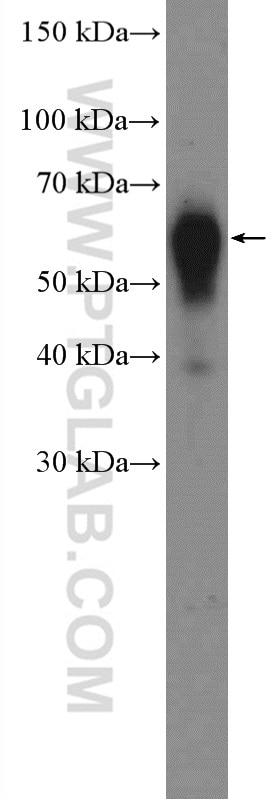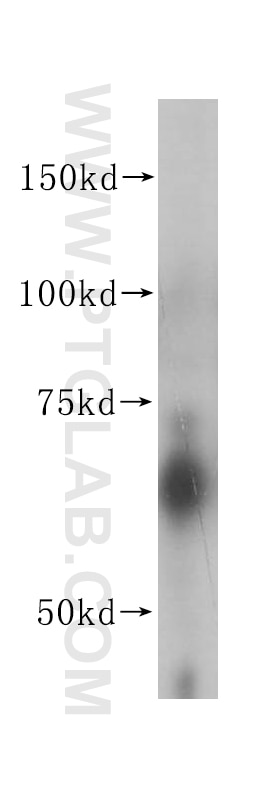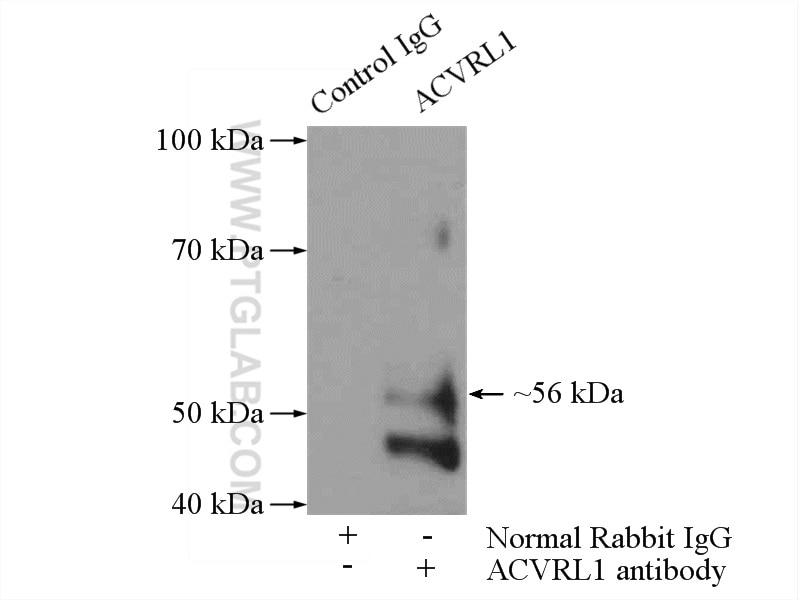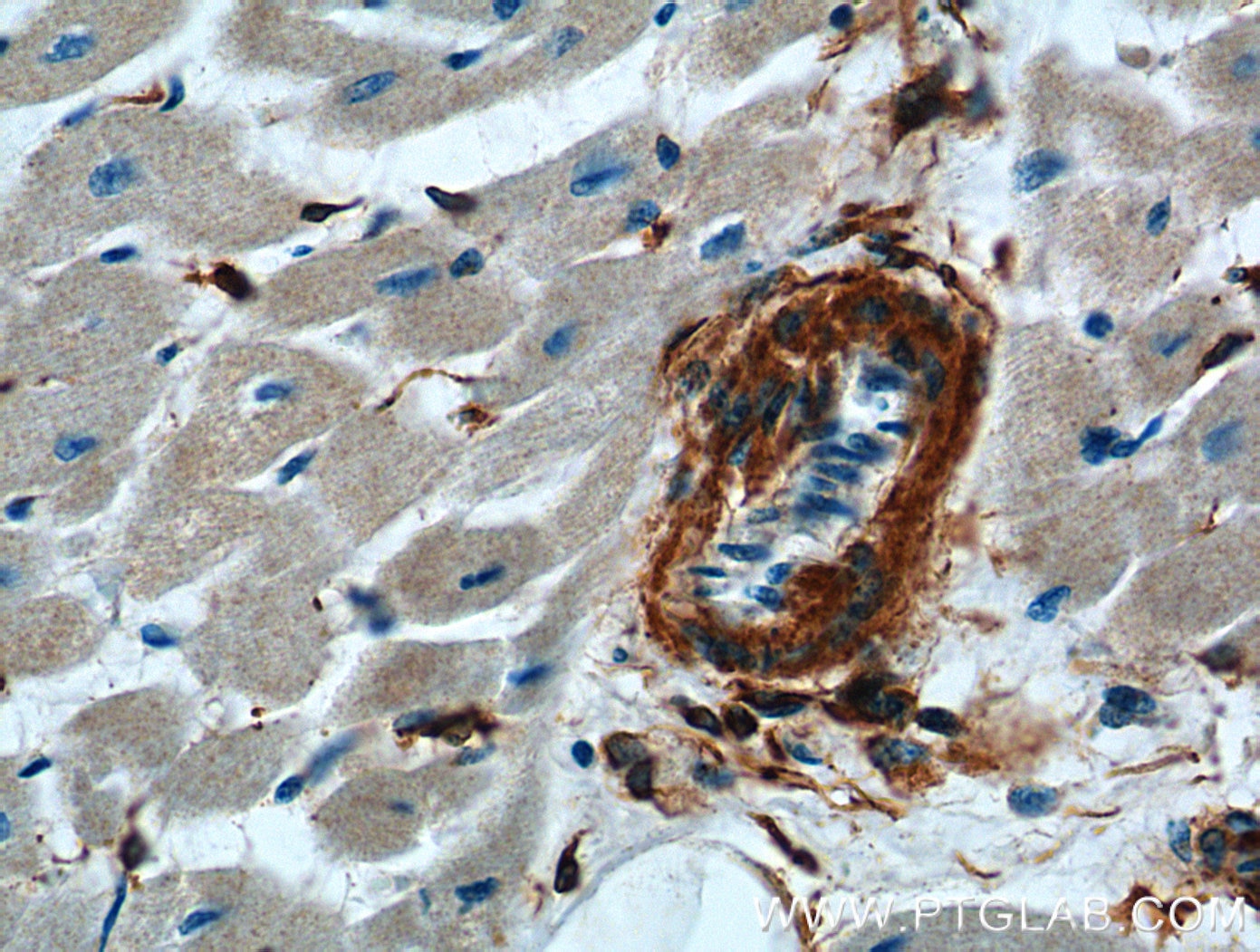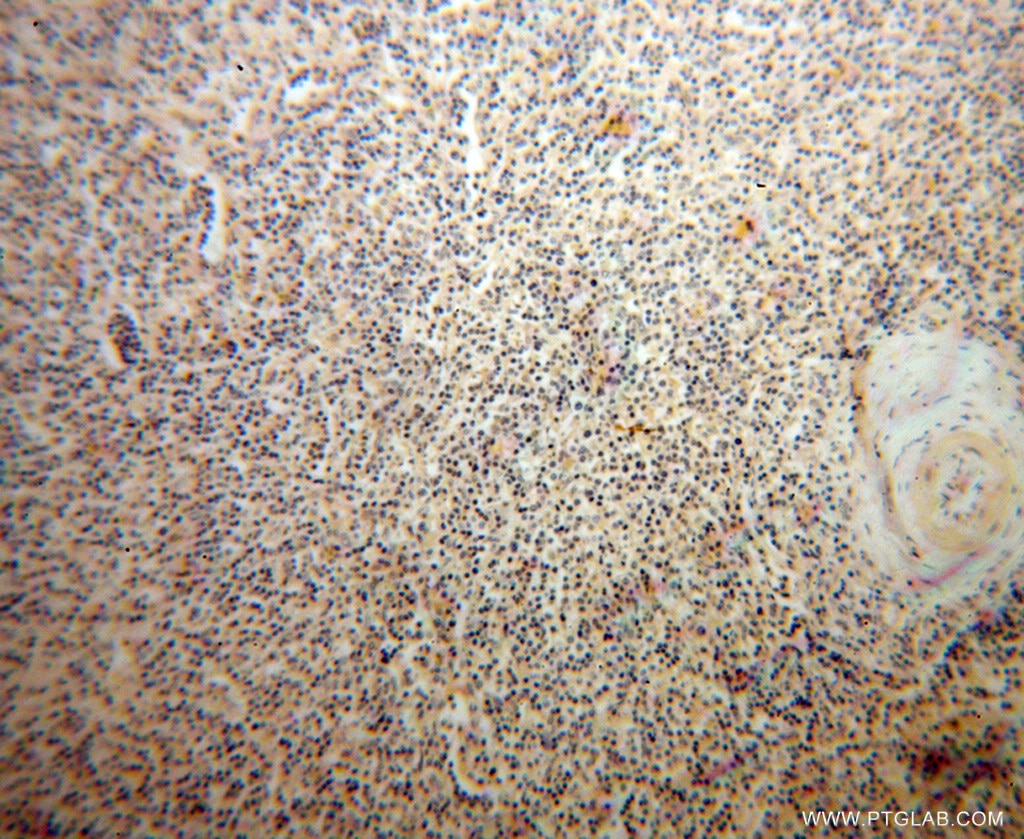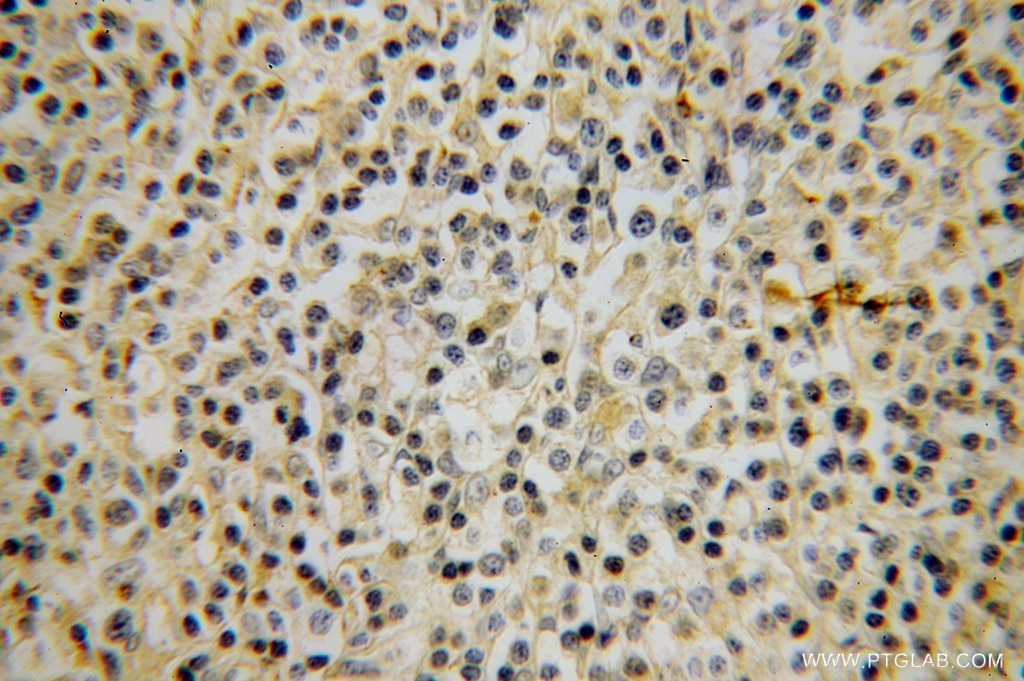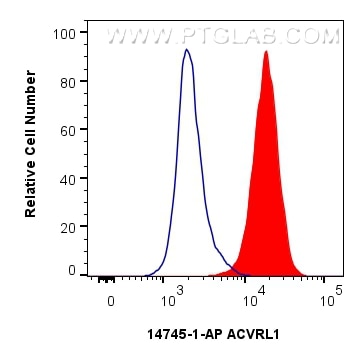Tested Applications
| Positive WB detected in | human placenta tissue |
| Positive IP detected in | Jurkat cells |
| Positive IHC detected in | human heart tissue, human lymphoma tissue Note: suggested antigen retrieval with TE buffer pH 9.0; (*) Alternatively, antigen retrieval may be performed with citrate buffer pH 6.0 |
| Positive FC (Intra) detected in | Jurkat cells |
Recommended dilution
| Application | Dilution |
|---|---|
| Western Blot (WB) | WB : 1:500-1:1000 |
| Immunoprecipitation (IP) | IP : 0.5-4.0 ug for 1.0-3.0 mg of total protein lysate |
| Immunohistochemistry (IHC) | IHC : 1:50-1:500 |
| Flow Cytometry (FC) (INTRA) | FC (INTRA) : 0.25 ug per 10^6 cells in a 100 µl suspension |
| It is recommended that this reagent should be titrated in each testing system to obtain optimal results. | |
| Sample-dependent, Check data in validation data gallery. | |
Published Applications
| WB | See 6 publications below |
| IHC | See 2 publications below |
| IF | See 1 publications below |
| IP | See 1 publications below |
Product Information
14745-1-AP targets ACVRL1 in WB, IHC, IF, FC (Intra), IP, ELISA applications and shows reactivity with human samples.
| Tested Reactivity | human |
| Cited Reactivity | human, mouse, rat |
| Host / Isotype | Rabbit / IgG |
| Class | Polyclonal |
| Type | Antibody |
| Immunogen |
CatNo: Ag6449 Product name: Recombinant human ACVRL1 protein Source: e coli.-derived, PGEX-4T Tag: GST Domain: 142-503 aa of BC042637 Sequence: HVRRRQEKQRGLHSELGESSLILKASEQGDSMLGDLLDSDCTTGSGSGLPFLVQRTVARQVALVECVGKGRYGEVWRGLWHGESVAVKIFSSRDEQSWFRETEIYNTVLLRHDNILGFIASDMTSRNSSTQLWLITHYHEHGSLYDFLQRQTLEPHLALRLAVSAACGLAHLHVEIFGTQGKPAIAHRDFKSRNVLVKSNLQCCIADLGLAVMHSQGSDYLDIGNNPRVGTKRYMAPEVLDEQIRTDCFESYKWTDIWAFGLVLWEIARRTIVNGIVEDYRPPFYDVVPNDPSFEDMKKVVCVDQQTPTIPNRLAADPVLSGLAQMMRECWYPNPSARLTALRIKKTLQKISNSPEKPKVIQ Predict reactive species |
| Full Name | activin A receptor type II-like 1 |
| Calculated Molecular Weight | 56 kDa |
| Observed Molecular Weight | 63 kDa |
| GenBank Accession Number | BC042637 |
| Gene Symbol | ACVRL1 |
| Gene ID (NCBI) | 94 |
| RRID | AB_2222474 |
| Conjugate | Unconjugated |
| Form | Liquid |
| Purification Method | Antigen affinity purification |
| UNIPROT ID | P37023 |
| Storage Buffer | PBS with 0.02% sodium azide and 50% glycerol, pH 7.3. |
| Storage Conditions | Store at -20°C. Stable for one year after shipment. Aliquoting is unnecessary for -20oC storage. 20ul sizes contain 0.1% BSA. |
Background Information
ACVRL1 (also known as ALK1) is a type I cell-surface receptor for the TGF-beta superfamily of ligands. It shares with other type I receptors a high degree of similarity in serine-threonine kinase subdomains, a glycine- and serine-rich region (called the GS domain) preceding the kinase domain, and a short C-terminal tail. ACVRL1 is highly expressed in endothelial cells and has a critical role in the control of blood vessel development and repair (PMID: 8640225). Mutations in the ACVRL1 gene are associated with hemorrhagic telangiectasia type 2.
Protocols
| Product Specific Protocols | |
|---|---|
| IHC protocol for ACVRL1 antibody 14745-1-AP | Download protocol |
| IP protocol for ACVRL1 antibody 14745-1-AP | Download protocol |
| WB protocol for ACVRL1 antibody 14745-1-AP | Download protocol |
| Standard Protocols | |
|---|---|
| Click here to view our Standard Protocols |
Publications
| Species | Application | Title |
|---|---|---|
Mol Cell OTULIN allies with LUBAC to govern angiogenesis by editing ALK1 linear polyubiquitin. | ||
Nat Commun Clonal hematopoiesis with JAK2V617F promotes pulmonary hypertension with ALK1 upregulation in lung neutrophils. | ||
J Mol Cell Cardiol BMP9 attenuates occurrence of venous malformation by maintaining endothelial quiescence and strengthening vessel walls via SMAD1/5/ID1/α-SMA pathway. | ||
Cell Biol Int CHRDL2 promotes osteosarcoma cell proliferation and metastasis through the BMP-9/ PI3K/ AKT pathway. | ||
J Thorac Dis Pulmonary inflammatory myofibroblastic tumor versus IgG4-related inflammatory pseudotumor: differential diagnosis based on a case series. | ||
Biosci Biotechnol Biochem BMP9 functions as a negative regulator in the myogenic differentiation of primary mouse myoblasts |

